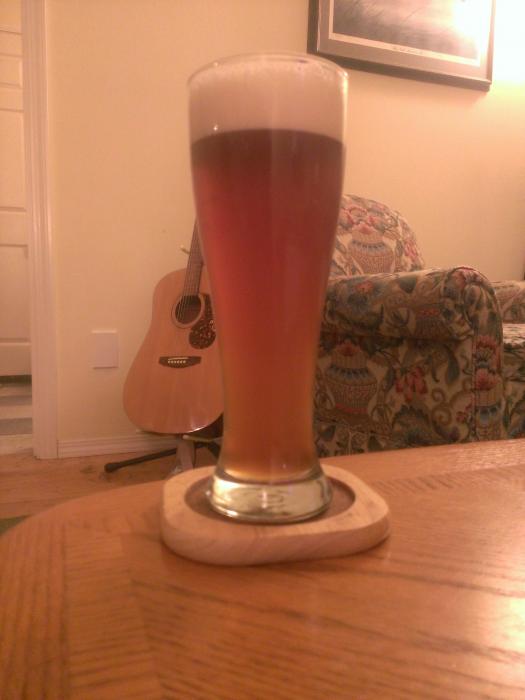Thanks!
OG 1.073. I just went to dry hop in my secondary and took a FG reading... 1.006. This reading was with my new refractometer, adjusting for alcohol using beersmith. I pitched at 60-ish F and kept the fermentation around 60 for 2 weeks then the last week I raised it to 68F. I'll filter next week and pour a sample off the keg to see what FG is on the hydrometer. Can't wait to try it!
The hydrometer says 1.020 for a final gravity. I filtered and kegged it - here is a glimpse of the final product. I'm a bit disappointed that it isn't clearer after filtering and that the hops are still not popping. I think the lack of hoppyness may be a factor of conditioning and carbonation. It gets better every day and has a smooth and creamy mouthfeel.




